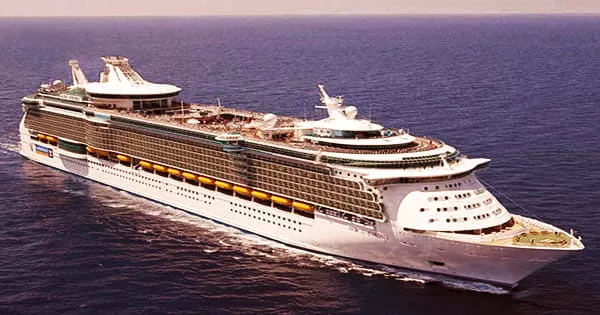According to a recent study, the cruise ship sector should be subject to worldwide surveillance and effective legislation because of its growing influence on both the environment and human health and well-being. Before the pandemic, tourism was one of the fastest expanding sectors in the world, and an international study team undertook the most extensive research evaluation ever undertaken on the subject.
The study, which was published in the journal Marine Pollution Bulletin, discovered that cruising is a significant source of environmental pollution and degradation, affecting air, water, soil, sensitive ecosystems and places, and species.
The cruise ship sector is also a possible source of physical and mental human health concerns to passengers, crew, and land-based citizens who live near ports or work in shipyards, according to the study. Infectious illness outbreaks, such as the COVID-19 epidemics that have been extensively reported aboard several cruise ships, pose a risk to specific demographics.

Our paper highlights that cruising is a prime example of how the fates of our health and our environments are intertwined. Up until now, most studies have looked at aspects of this in isolation. Our review is the most comprehensive to date to combine these research fields and take a holistic view of how cruising damage our environments and our health. We now need global legislation to minimize damage on both our oceans and our health.
Dr. Josep Lloret
The review also discovered evidence of the negative effects of noise and air pollution on health, as well as harsh working conditions for boat and shipyard workers that might lead to physical and mental health problems.
The evaluation incorporates information from more than 200 research publications on human and environmental health in various oceans and seas throughout the world. The study was carried out by a group of researchers from Spain, Croatia, and the United Kingdom.
The first author Dr. Josep Lloret, of the University of Girona, said: “Our paper highlights that cruising is a prime example of how the fates of our health and our environments are intertwined. Up until now, most studies have looked at aspects of this in isolation. Our review is the most comprehensive to date to combine these research fields and take a holistic view of how cruising damage our environments and our health. We now need global legislation to minimize damage on both our oceans and our health.”
Professor Lora Fleming, of the University of Exeter, and author of the review, said: “Cruise tourism is a was rapidly expanding pre-COVID-19, and our research shows it causes major impacts on the environment and on human health and wellbeing. We need much better monitoring to generate more robust data for the true picture of these impacts. Without new and strictly enforced national and international standardized rules, the cruise industry is likely to continue causing this serious health and environmental hazards.”
The evaluation included research publications on a variety of topics that have environmental, health, or both effects. They synthesized six publications on carbon dioxide emissions, which contribute to global warming and have major effects on both human and environmental health.
According to available data, a big cruise ship may have a carbon footprint of more than 12,000 automobiles. Passengers on an Antarctic trip may emit as much CO2 in seven days as the average European does in a year. Cruise and ferry ship CO2 emissions in the Mediterranean are projected to account for up to 10% of total ship emissions.
According to a 2007 research, emissions factors for cruise ships sailing to New Zealand were at least three times greater than those for international aircraft. The amount of energy used to stay overnight on a cruise ship was 12 times that of a land-based hotel.
The report also contains information on solid waste as an example of a cruise ship activity that has an influence on both health and the environment. Plastic pollution and marine litter are huge global issues, and a cruise liner carrying 2,700 guests may create more than a ton of garbage each day.
While cruise ships account for a minor portion of the worldwide shipping industry, they are estimated to account for around a quarter of all garbage created by the industry. According to statistics computed for cruise ship trips to Southampton in August 2005, 75% of rubbish created by guests onboard was burnt and disposed of at sea, including many complaints of illegal waste dumping in the Southern Ocean.
Co-author Dr. Hrvoje Caric, of the Institute for Tourism in Croatia, said: “When environmental standards between cruisers and land-based polluters are compared, it becomes clear that there is a lot of room for improvement. We’ve long known that cruise ships cause damage to the environment, however, it’s hugely important to incorporate the impact on human health into that picture. We hope that research like this will prompt action to help the cruise industry become more environmentally sustainable.”





